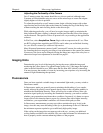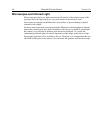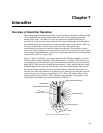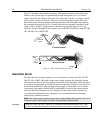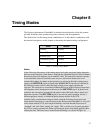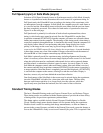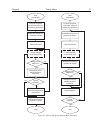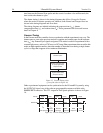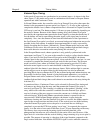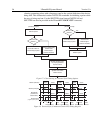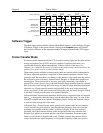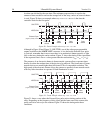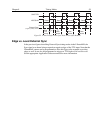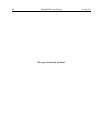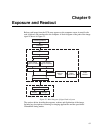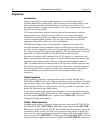
Chapter 8 Timing Modes 55
External Sync Timing
In this mode all exposures are synchronized to an external source. As shown in the flow
chart, Figure 17, this mode can be used in combination with Normal or Preopen Shutter
operation and with Continuous Cleans.
In Normal Shutter mode, the controller waits for an External Sync pulse, then opens the
shutter for the programmed exposure period (see Figure 17). As soon as the exposure is
complete the shutter closes (shutter compensation time is discussed in Chapter 9) and the
CCD array is read out. The shutter requires 5-10 msec to open completely, depending on
the model of shutter. Because of this shutter opening delay, the External Sync pulse
provided by the experiment must precede the actual signal by at least that much time. If
not, the shutter will not be open during the entire signal, or the signal may be missed
completely. Also, since the amount of time from the initialization of the experiment to
the first External Sync pulse is not fixed, an accurate background subtraction may not be
possible for the first readout. In multiple-shot experiments this is easily overcome by
simply discarding the first frame. Alternatively, Normal Shutter mode can be run with
Continuous Cleans active: this will remove any charge (ambient light and dark charge)
that would otherwise accumulate on the array during the wait time (t
w
).
In the Preopen Shutter mode, shutter operation is only partially synchronized to the
experiment (see Figure 17). As soon as the controller is ready to collect data the shutter
opens. Upon arrival of the first External Sync pulse at the I-PentaMAX, the shutter
remains open for the specified exposure period, closes, and the CCD is read out. As soon
as readout is complete the shutter reopens and waits for the next frame. The Preopen
mode is useful in cases where an External Sync pulse cannot be provided 5-10 msec
before the actual signal occurs. Its main drawback is that the CCD is exposed to any
ambient light while the shutter is open between frames. If this ambient light is constant,
and the triggers occur at regular intervals, this background can also be subtracted,
providing that it does not saturate the CCD, but accurate background subtraction may not
be possible for the first frame. Instead of using background subtraction, you could run
Preopen Shutter mode with Continuous Cleans active: this will remove any charge
(ambient light and dark charge) that would otherwise accumulate on the array during the
wait time (t
w
).
As mentioned above, Continuous Cleans can be selected for External Sync timing and
will remove any charge from the array until the moment the External Sync pulse is
received (see Figure 18). This cleaning is in addition to the standard “cleaning” of the
array, which occurs after the controller is enabled. Once the External Sync pulse is
received, cleaning of the array stops as soon as the current row is shifted, and frame
collection begins. With Normal Shutter operation the shutter is opened for the set
exposure time. With PreOpen Shutter operation, the shutter is open during the
continuous cleaning and, once the External Sync pulse is received, the shutter remains
open for the set exposure time and then closes. If the vertical rows are shifted midway
when the External Sync pulse arrives, the pulse is saved until the row shifting is
completed, to prevent the CCD from getting “out of step.” As expected, the response
latency is on the order of one vertical shift time, from 1-30 µsec depending on the array.
This latency does not prevent the incoming signal from being detected, since
photogenerated electrons are still collected over the entire active area. However, if the
signal arrival is coincident with the vertical shifting, image smearing of up to one pixel is
possible. The amount of smearing is a function of the signal duration compared to the
single vertical shift time. Note that the NOTSCAN signal is active while the camera is



